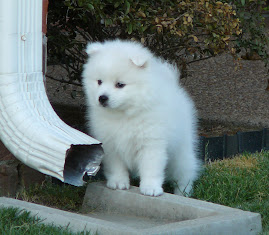Written June 16, 2009Even though some experts say the recession is nearing it's end, others are reporting that it could be awhile before we see the light at the end of the tunnel. Considering the tough times that some of our readers are facing, I thought the following article, written by Kelli B. Grant from Smart Money Magazine, might be helpful.Shelters across the country reported an increase in abandoned taken during 2008, with many former owners citing economic hardship. Without a doubt, pets can be expensive. Americans spent a whopping $43.4 billion on their pets in 2008, according to American Pet Products Association, an industry group. That breaks down to an average of $670 per dog and $447 per cat that was spent on routine vet care, food, grooming, treats and toys.To avoid having to sacrifice the quality of your pet's care, or worse, give them up all together, here's how you can cut down on pet care costs.
HEALTH CAREVisit a nonprofit. Routine procedures such as vaccinations or spay/neuter surgeries can be much less expensive at your local Society for the Prevention of Cruelty to Animals ("SPCA") or Humane Society. At the ASPCA Bergh Memorial Animal Hospital in New York, implanting a micro-chip ID costs $25. Private practices routinely charge twice that amount.Vaccinate appropriately. Most pets don't need a slew of annual vaccines, says Louise Murray, director of medicine at the ASPCA Bergh Memorial Animal Hospital. Animals that are older, spend the majority of their time indoors, or live in certain areas of the country may not need ever vaccine or booster. An indoor-only cat, for example, won't need the annual Feline Leukemia vaccine, which saves about $30, says Murray.
Fill prescriptions at drug stores or online retailers. Vet offices can't compete with the bulk deals pharmacies receive, says Adam Goldfarb, a spokesman for the Human Society of the United States. You can easily save 50% or more on antibiotics and other meds used on humans by buying at a mainstream pharmacy like Rite Aid or an online retailer like Drugstore.com. For pet-specific prescriptions like heart-worm preventative products, look to online pet pharmacies such as 1800PetMeds.com or Doctors Foster and Smith. (For either option, you'll need a prescription from your vet.)Haggle. Many vets will negotiate prescription food and medication prices, while others offer discounts for bringing in multiple animals at the same time. "Don't be afraid to ask your vet, 'Can you match this price?'" says Ernie Ward, chief of staff at Seaside Animal Care in Calabash, N.C. Also, as about freebies -- manufactures often offer vets coupons and free samples of food, treats and meds.
Consult by phone. Not ever bout of indigestion is caused to race your pet to the vet, says Ann Hohenhaus, senior medical advisor at the Animal Medical Center in New York. If you're not certain that the circumstances are dire, call your vet for a free consultation. "They know you, they know your pet," she says -- and so can offer assessment and at-home treatment options.
FOODRead the labels. Some premium foods are richer in nutrients, meaning you don't need to feed your pets as much as you would with cheaper foods that contain lots of fillers. Look at the serving suggestions to determine whether you can feed your dog less of a higher-quality food and whether that makes more financial sense. Of course, not all pricey pet foods offer better quality, says Murray. That's why it's important to not only look at the portion sizes, but also the ingredients. Protein should be the first ingredient listed instead of a filler lake corn, for example. Also, seek packages that say "complete and balanced," which means the food meets the nutritional standards set by the Association of American Feed Control Officials.Buy big. Huge bags of food can be a great deal at the warehouse club, especially if you have several pets or a large breed dog. At Sam's Club, a 52-pound bag of Pedigree adult dog food costs $24.28; at supply chain Pet Valu, a 40-pound bag (the biggest they sell) goes for $24.99.
TOYS AND GROOMINGSkip the pet supply store. Walmart, Target and other superstores carry pet toys and other supplies for a fraction of the price of pet-specific chains, says Gary Cassera, owner of Balanced Dog LLC, a dog training company based in Marlton, N.J. Petco offers its signature plush dog toy for $6.99, while Walmart has a three-pack of a similar toy for $14.80 - or less than $5 apiece.Groom at home. Learn to cut your pets nails and do basic grooming yourself, instead of paying someone else to do it, suggests Says Ward. At PetSmart, a bath, brushing and nail trimming costs $34.99 for a golden retriever. Grooming your pet once a month at home can save you more than $350 annually, even considering the cost for an electric trimmer and other supplies.
Many of these suggestions are "Rules of Thumb" for us at Sweet Samurai Kennels. Caring for your furry loved-ones can be quite expensive, and in this day and time, we need all the help we can get!
.jpg)
+Calendar+Pic+(cropped+with+corrected+sign).jpg)













